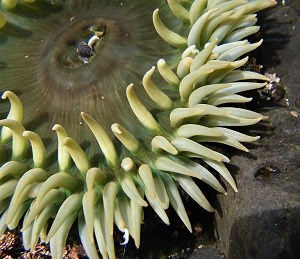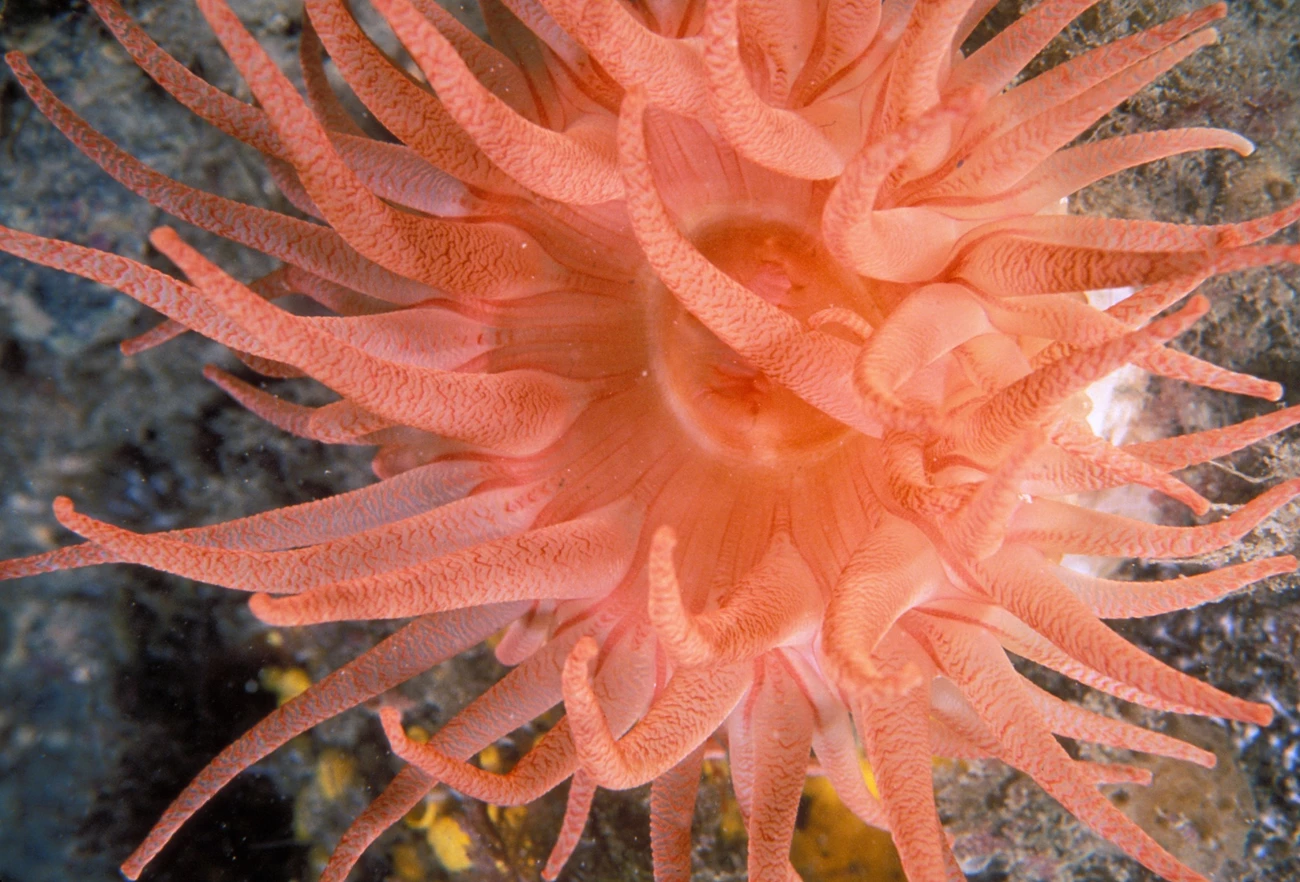
Among the most beautiful of marine animals are sea anemones—the flowers of the sea. Sea anemones (Metridium) are predators and are related to jellyfish. A ring of tentacles, surrounding a mouth, is covered with specialized stinging cells. When touched, the cells eject microscopic harpoon-like barbs called nematocysts which usually are poisonous. In this way food items are held tightly, usually paralyzed, and then brought to the mouth by the muscular tentacles. To people, the barbs can be felt as a sticky sensation when touched. One species of anemone (Tealia) is found in low rocky areas. It is typically red and tan in color, and has thick and strong tentacles. It feeds on large prey, such as mussels, snails, and sea urchins that have been dislodged by the current or by predators. The feeding behavior of these anemones can be observed by dropping a mussel on one of the tentacles. Anthopleura, which is smaller than Tealia and green in color, is typically found in aggregations on rock surfaces where sand, shells, and pebbles have accumulated. When the tide ebbs, the anemones contract into blobs covered with bits of gravel and shell, blending well into the background. If stepped or pressed on, the pressure causes water to squirt from their mouths and through pores in their body walls. The sea anemone can be most visible on the docks and pilings, although smaller individuals are found on rocks in the channel. They are either orange or white, can reach up to two feet in length, and can be recognized by their delicate, feathery tentacles. Sea anemones feed primarily on planktonic animals that get caught in its tentacles as water flows past. The floats and pilings are also a good place to observe hydroids. Hydroids are relatives of jellyfish and sea anemones. They feed on plankton and live in colonies, each with hundreds of individuals. Hydroids have an alternation-of-generation life history, meaning that they have very different body types associated with different sexual stages. The hydroid is the asexual stage. It buds off free-swimming jellyfish which are sexual. It is these jellyfish which produce eggs and sperm which unite and develop eventually into hydroids. 
|
Last updated: March 16, 2018
